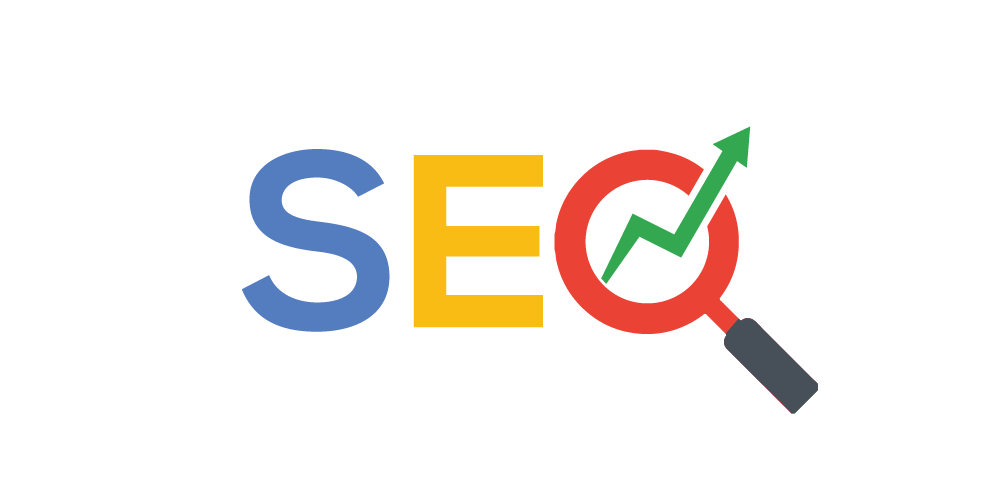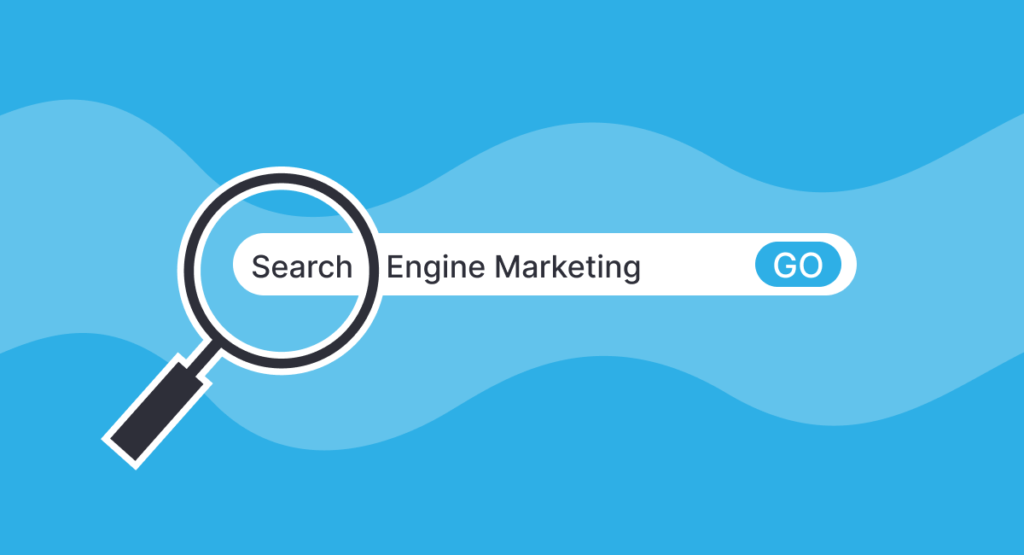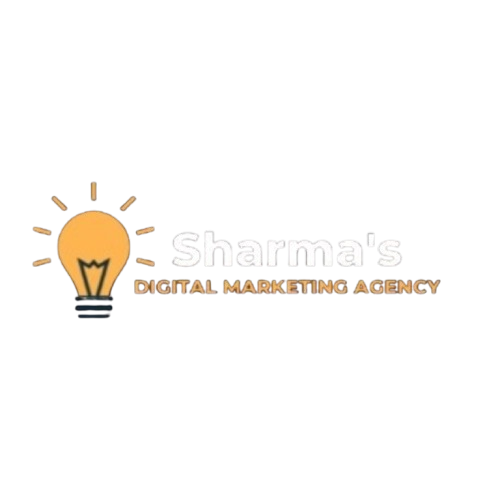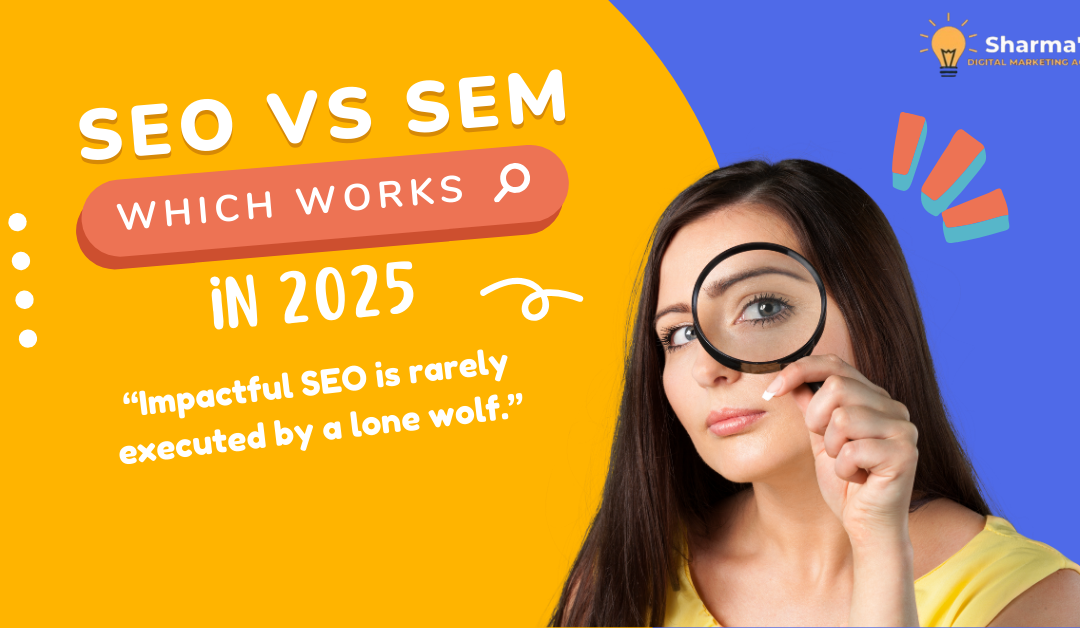The world of digital marketing has seen unprecedented growth, and with it comes the ever-evolving debate: SEO (Search Engine Optimization) vs SEM (Search Engine Marketing). As we step into 2025, businesses are increasingly challenged to choose the most effective strategy to dominate the digital space. Let’s dive deep into the intricacies of SEO and SEM, evaluating their advantages, limitations, and use cases to determine which one reigns supreme in 2025.
What is Search Engine optimisation?
Search Engine Optimization (SEO) is the practice of optimizing a website to improve its visibility in organic search engine results. SEO focuses on increasing unpaid traffic by implementing strategies such as keyword optimization, quality content creation, and technical improvements.
Key Elements of Search Engine optimisation in 2025
- Keyword Research and Optimization:
- Advanced AI tools like ChatGPT and RankBrain are shaping how keywords are identified and used.
- Long-tail keywords and conversational search queries are more prominent than ever.
- Content Quality:
- Google’s E-E-A-T (Experience, Expertise, Authority, Trustworthiness) guidelines prioritize content that adds value.
- Video content and interactive media are highly favored by search engines.
- Technical SEO:
- Core Web Vitals such as page speed, interactivity, and visual stability are essential.
- Mobile-first indexing is non-negotiable.
- Link Building:
- Focus has shifted from quantity to the quality of backlinks.
- Earning links from authoritative websites significantly boosts rankings.
- User Experience (UX):
- SEO in 2025 heavily relies on providing seamless navigation, fast-loading pages, and a mobile-friendly interface.

What is SEM?
Search Engine Marketing (SEM) involves paid advertising to increase visibility on search engine result pages (SERPs). SEM allows businesses to target specific audiences with ads that appear at the top of search results.
Key Elements of SEM in 2025
- PPC Campaigns (Pay-Per-Click):
- Platforms like Google Ads and Bing Ads remain dominant.
- Dynamic search ads and AI-driven bidding strategies are game-changers.
- Targeting and Personalization:
- Advanced audience segmentation enables highly targeted campaigns.
- AI tools help create personalized ads that resonate with users.
- Performance Metrics:
- Real-time analytics provide insights into ad performance.
- Conversion tracking and ROI analysis are critical for optimizing campaigns.
- Ad Formats:
- Video ads, carousel ads, and shopping ads have gained significant traction.
- Interactive ads that engage users are the future of SEM.
- Budget Control:
- SEM offers complete flexibility in ad spend, making it suitable for businesses of all sizes.

SEO vs SEM: A Detailed Comparison
1. Cost
- SEO: While SEO is considered “free,” it requires significant time, effort, and expertise to implement effectively. Costs are incurred in hiring specialists, creating quality content, and maintaining technical standards.
- SEM: SEM involves direct monetary investment in paid ads. While it delivers immediate results, the costs can escalate, especially in competitive industries.
2. Timeframe for Results
- SEO: It’s a long-term strategy. Results may take months, but the benefits are sustainable.
- SEM: Delivers instant visibility. Ads appear as soon as campaigns are launched, making it ideal for short-term goals.
3. Audience Reach
- SEO: Attracts an organic audience actively searching for relevant information.
- SEM: Provides the ability to target specific demographics, behaviors, and locations with precision.
4. Credibility and Trust
- SEO: Organic results are perceived as more trustworthy by users.
- SEM: Paid ads may face skepticism, with users often preferring organic listings.
5. Scalability
- SEO: Scaling SEO efforts requires ongoing content creation and optimization.
- SEM: Campaigns can be scaled up or down instantly based on budget and goals.
The Best Use Cases for Search Engine optimisation in 2025
- Building Long-Term Brand Authority:
- SEO is perfect for businesses looking to establish a lasting online presence.
- Content-Driven Niches:
- Industries such as education, healthcare, and lifestyle thrive with a strong content strategy.
- Budget Constraints:
- Startups with limited funds can benefit from the compounding returns of SEO.
The Best Use Cases for SEM in 2025
- Launching a New Product or Service:
- SEM ensures instant visibility and reach for new offerings.
- Seasonal Campaigns:
- Perfect for businesses leveraging holidays and events to boost sales.
- Competitive Industries:
- In markets where organic ranking is fiercely competitive, SEM provides a competitive edge.
SEO and SEM Together: The Power Duo
Instead of pitting SEO against SEM, businesses can leverage both strategies for maximum impact. By combining the long-term benefits of SEO with the immediate results of SEM, you can create a balanced and effective digital marketing strategy.
How to Integrate SEO and SEM
- Keyword Synergy:
- Use SEM data to identify high-performing keywords and incorporate them into your SEO strategy.
- Retargeting Campaigns:
- Use SEM to retarget users who visited your site via organic search but didn’t convert.
- Content Amplification:
- Promote your best-performing organic content through paid ads to increase its reach.
Emerging Trends in 2025
As the digital marketing landscape evolves, new trends are shaping how businesses approach SEO and SEM. Staying ahead of these trends can provide a competitive edge:
- Voice Search Optimization:
- With the rise of voice assistants like Alexa and Siri, optimizing for conversational queries is essential. Both SEO and SEM need to adapt to this growing trend.
- AI and Automation:
- AI tools are revolutionizing how campaigns are managed. From automated bidding strategies in SEM to AI-driven content creation for Search Engine Optimisation, the future lies in embracing intelligent automation.
- Sustainability and Ethical Marketing:
- Users are increasingly drawn to brands that demonstrate ethical practices. Incorporating sustainable and inclusive practices into your marketing efforts can enhance both organic and paid campaigns.
- Zero-Click Searches:
- Google’s focus on providing answers directly to SERPs impacts both search engine optimisation and SEM strategies. Optimizing for featured snippets and knowledge panels is crucial in 2025.
- Video and Interactive Content:
- As video content dominates, platforms like YouTube and TikTok become integral to SEM strategies. For Search Engine Optimisation, optimizing video descriptions, titles, and transcripts ensures better visibility.
Practical Tips for Businesses
- Start Small, Scale Gradually:
- For businesses new to digital marketing, it’s wise to begin with SEM for immediate results while simultaneously investing in SEO for long-term growth.
- Monitor and Adapt:
- Regularly analyze performance metrics to identify what works. Use tools like Google Analytics and SEMrush to refine strategies.
- Focus on User Intent:
- Align content and ads with the specific needs and intents of your target audience to maximize engagement.
Conclusion
Both SEO and SEM are indispensable tools in the digital marketer’s arsenal. While each has its unique strengths and limitations, the real power lies in using them together strategically. By staying updated with emerging trends, focusing on user intent, and combining long-term and short-term strategies, businesses can thrive in the competitive digital landscape of 2025.


